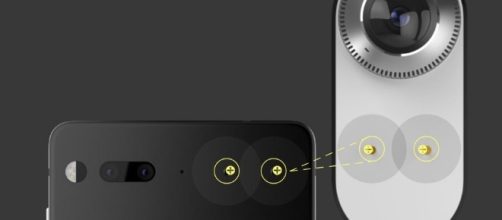Andy Rubin can consider himself a giant of mobile communications technology, thanks to his arguable masterpiece of an open-source smartphone operating system that is about the only serious competition for Apple iOS.
This is, of course, Android, which was developed with Google under his oversight. Years later, bigger and updated versions of the Android OS continue to run the systems of many major smartphone brands like Motorola. Rubin, on the other hand, has moved on to become the boss of a new startup, Essential Products, where he’s cooking up some neat ideas in the vein of smart technology, such as a smart speaker for home use.
But he’s never entirely forgotten Android and smartphones, because he’s making one of his own, an “Essential” phone, so to speak.
Challenge to the smartphone giants
Tuesday, May 30 saw Andy Rubin announce one of the newest products to come out of development for his Essential startup. Priced at $699, the self-hyping Essential Phone is a smartphone that is, quite naturally, powered by Android OS.
At a glance, the Essential seems to tackle certain problems that consumers have with their preferred smartphone brands. Where most phones in this vein do need careful handling to avoid being dropped, the titanium casing of the Essential seems to dare rough treatment. Rubin even demonstrated by dropping the phone on his demo desk, repeatedly.
With the latest trend in phones being edge-to-edge display, Essential makes to trump current leader Samsung by having a screen reaching up to the top edge, even wrapping around the front selfie camera. Speaking of which, the phone has a spiffy “ultra-thin” dual cam system on it. Whereas for connections, the Essential makes do with a USB-C port and a 3.55mm adapter for physical links, but the meat of the matter is its magnetic connector for wireless data transfer.
Personalized device
It’s the magnetic connectors of the Essential smartphone that Andy Rubin has capitalized on. He sees the possibility of magnetically docking and removing any optional accessories to the basic phone as it needs. The father of Android is already putting that principle to action by offering a $50 add-on option, that being a 360-degree camera that docks onto the back.
This is “modular” phone concept that his former associates at Google had dabbled in.
Whether consumers will be significantly interested enough in the Essential smartphone, in order to make it more than a one-off novelty, only time will tell. But having a Quad HDdisplay, Qualcomm Snapdragon 835 processor, 4GB of RAM and 128 GB of storage may be incentive enough. And as a design choice, there are no logos whatsoever on the Essential phone, the better to sell that it truly belongs to its owner.


